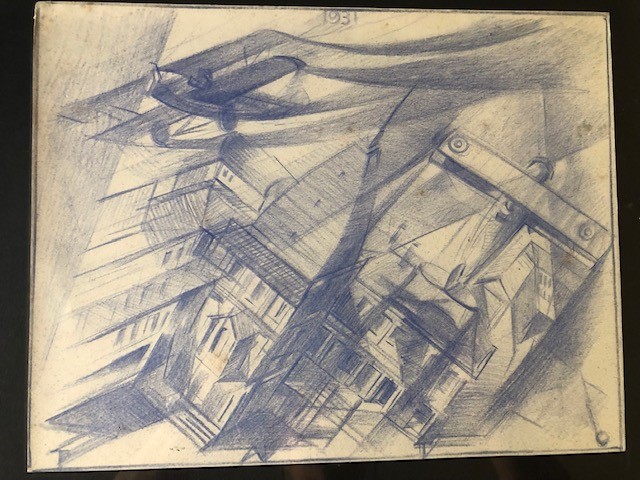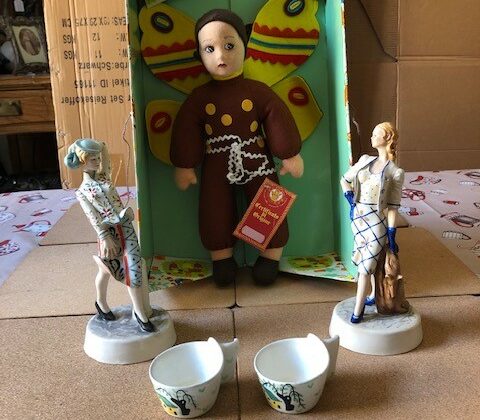TATO – Top for aeropainting
by Prof. Francesco Carelli

TATO 1931 – charcoal pastels on paper – Arerial acrobatic on an Italian city
Guglielmo Sansoni, said Tato (Bologna, 1896 – Roma, 1974),was an Italian futurist artist, one of the protagonists of the aeropainting.
Trained as a self-taught artist, he was a painter, set designer and director, approaching Futurism in 1918. During World War I, he befriended Umberto Boccioni and Mario Sironi. In 1920 he organized a fake funeral to “ die “ as Guglielmo Sansoni and be reborn as Tato futurist. He met Filippo Tommaso Marinetti for the first time in Bologna in 1922 – the city where he was among the promoters of the city’s futurist movement, together with Angelo Caviglioni], Aldo Giovannini, Federico Valli and became a friend organizing also a traveling futurist exhibition.
In 1929, together with other futurists, he published the Manifesto of aeropainting. Several of his works are representations of flying over cities outlining famous buildings.
He exhibied, winning prizes, works of this kind, such as Airplanes, Screwing, Inverted, Spiral, Aerial Landscape, Sensation of 1-time flight, Sensation of 2-time flight, Aerial perspective, Spiral of Helix, Launch of Parachute, Hydro speed, The sense of Emptiness, rhythms of airplanes, 27 works presented in Milan, in 1931, at the Futurist Exhibition of Aeropainting and Scenography. At an exhibition in Rome, in 1935, to be mentioned: Flying over Sabaudia, Aerial acrobatics, Four – engine, S.55 flying over Ostia.
He exhibited ceramic work at the decorative art Exhibition in Rome and later at the Triennale in Venice and at international exhibitions in Berlin,, Wien, Paris, New York, Bruxelles and Amsterdam. In 30s , asserts himself with his aeroceramics, frequently in futurist style. With MGA manufacture in Alissola, he dedicated himself to the production of large ceramic works including a large celebratory panel the he donated to Mussolini.
From 1926, he directed a photographic agency where he carried out spectralizations, solarizations and photomontages, continuing the works initiated by the Bragaglia brothers; in September 1930 with Marinetti he organized the first National Photographic Competition and in 1931 the proposed the Manifesto of Futurist Photography.
Photo: pencil on paper. 1931


